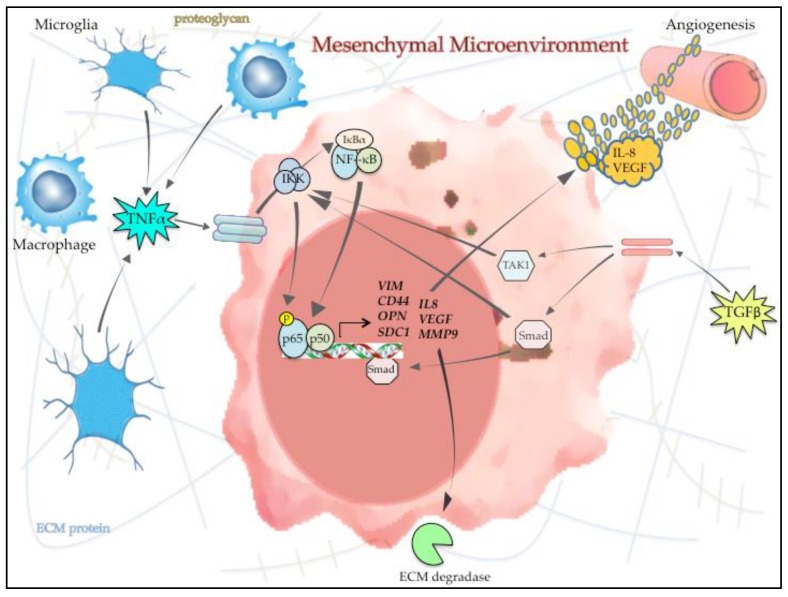Figure 3.
NF-κB and the microenvironment in mesenchymal GBM. Cytokines and other signaling molecules in the microenvironment (e.g., TNFα and TGFβ) are released by infiltrating tumor associated macrophages/microglia (TAMs) and other supporting cells and induce NF-κB activity in GBM cells. Activated NF-κB subsequently promotes mesenchymal change by inducing the expression and secretion of angiogenic factors (e.g., IL-8 and VEGF), ECM proteins/proteoglycans and ECM degrading enzymes, such as MMP9. This illustration demonstrates how the interaction between GBM cells and the surrounding microenvironment contributes to promoting the overall mesenchymal phenotype in GBM focusing on the role of NF-κB in this reciprocal process.

